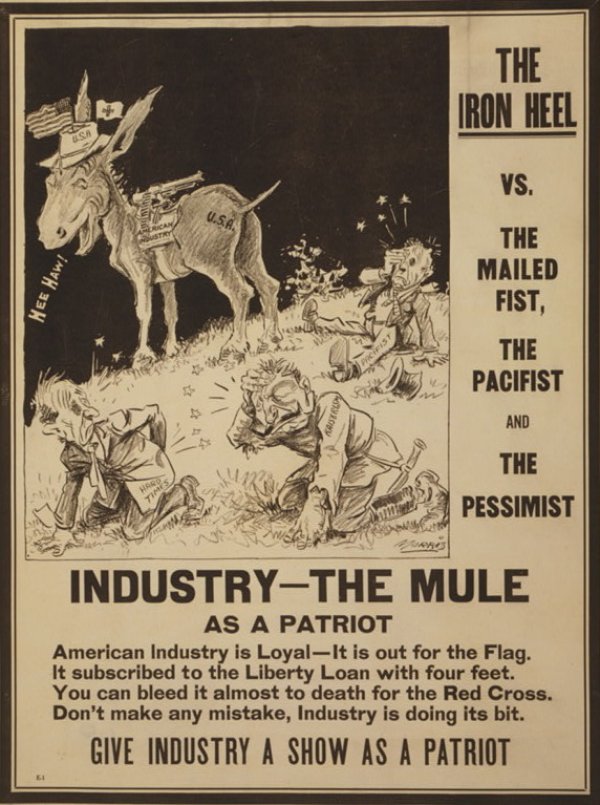In 1917, President Woodrow Wilson declared that neutrality in the Great War was "no longer feasible" and that the U.S. had to intervene to make the world "safe for democracy." What changed between 1914 and 1917 that caused the U.S. to enter WWI? In this lesson, students address this question as they corroborate a textbook account with two documents: a speech by President Wilson and an excerpt from Howard Zinn’s A People’s History of the United States.
[Lesson Plan updated on 11/27/18.]

Image: A 1917 Political poster depicting U.S. industry as a mule kicking "Kaiserism," "Pacificism," and "Hard Times" by Morris. From the Library of Congress.